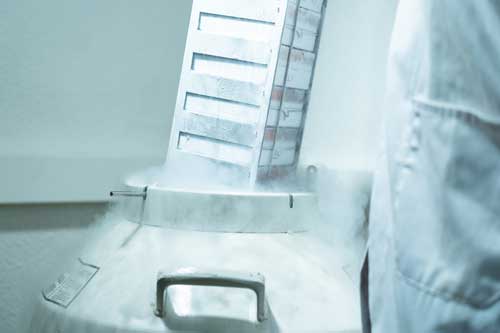 Add My Company
Add My Company
Ensuring Cryogenic Success: Safely Transporting Valuable Samples with Innovative Container Design

Valuable materials can be stored for many years under cryogenic temperatures without losing viability which is a key enabling technology in research, cell therapy and regenerative medicine. It is proving to be a vital tool in protecting cells across diverse scientific applications such as stem cells, animal reproductive cells, human tissue samples and embryos.
 There may however, come a time when you will need to transport your samples and regardless of distance, deciding the safest mode of transport for your samples is critical.
There may however, come a time when you will need to transport your samples and regardless of distance, deciding the safest mode of transport for your samples is critical.
To ensure there is no detrimental effect on your materials/samples, using the coldest container possible is obviously the best solution. One trusted solution is using nitrogen vapour (dry) shippers which will maintain your product temperature within or below any critical temperature parameters.
Vapour shippers are designed to absorb the liquid nitrogen into an absorbent material, this ‘charging’ will then release nitrogen vapour over time to maintain cryogenic temperatures during transit. The best practice when charging the vessel with liquid nitrogen is to weigh the vessel to ensure that adequate nitrogen has been absorbed to guarantee sufficient holding time is available for your shipment.
Once filled, that isn’t the end of the story, there is another important element to consider. What type of secondary container should be used to place the vessel in for safe transportation?
A rectangular case has been used for many years for ease of handling, however this comes with risk. Let’s go back to the design of the shipping vessel. The product has a neck opening to allow for filling of samples and liquid nitrogen, but the remaining surface area is protected with vacuum insulation to maintain cryogenic temperatures in the sample area. Nitrogen gas being heavier than air will sit at the lowest point inside the vessel and only evaporate through the neck opening, so by keeping the vessel in an upright position this keeps the heavy cold gas sitting passively under the lid. When using a rectangular shipping box there is risk that for easy transportation within any delivery vehicle, the container could be placed on its side therefore creating an easy escape route for your cold vapour through the lid in the horizontal plane.  With the vapour shipper in this position, the holding time of the absorbed nitrogen gas could reduce by over 50%, therefore a 10 day shipper becomes a 5 day shipper. If by any chance your shipping container is placed upside down, then you are likely to have a 1 day shipper!
With the vapour shipper in this position, the holding time of the absorbed nitrogen gas could reduce by over 50%, therefore a 10 day shipper becomes a 5 day shipper. If by any chance your shipping container is placed upside down, then you are likely to have a 1 day shipper!
Holding times for vapour shippers are becoming increasingly critical as extra time through security checks and off-loading of cargo on carriers becoming more prominent. Additional time should be factored into normal transit times to ensure your product remains under its critical temperatures even in the event of these delays.
Even with a vapour shipper stored and transported correctly there are additional security measures that should be considered to ensure your product remains safe. One item that can be beneficial is a temperature logger that can provide a valuable audit trail, additionally, all vapour shippers should have a lockable lid as should the shipping case.
Due to their wealth of cryogenic experience and awareness of how vapour shippers are handled, IC Biomedical has developed a shipping container (now available in the UK from Biopharma Group) with a new design which ensures your vessel should only be transported vertically. This container is made of high-impact-resistant material to protect its contents from physical damage, is a more cylindrical shape to ensure that it is transported in the correct aspect and comes with a built-in slot allowing for the case to be locked down for added security.
If you’d like to know more about this new type of vapour shipper container and how you can obtain one for the shipping of your valuable samples, please contact us HERE
For more information on Ensuring Cryogenic Success: Safely Transporting Valuable Samples with Innovative Container Design talk to Biopharma Group

